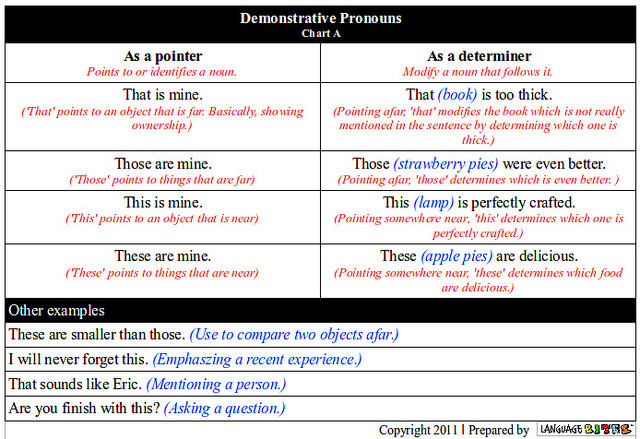Demonstrative Pronoun vs Demonstrative Adjective
The difference between demonstrative pronouns and demonstrative adjectives can be subtle and may confuse English learners. However, once the basic concept is understood, it is easy to remember. Essentially, demonstrative adjectives and pronouns are used to refer to specific objects or people. The key difference between the two is that a demonstrative adjective requires a noun to qualify it, while a demonstrative pronoun stands alone. This article aims to highlight the differences between demonstrative pronouns and adjectives while providing a comprehensive understanding of each category.
What is a Demonstrative Adjective?
Demonstrative adjectives include this, these, that, and those. When referring to objects or people close to the speaker, we can use “this” in the singular or “these” in the plural. When the object is far away, we use “that” in the singular and “those” in the plural. However, the unique feature of demonstrative adjectives is that they cannot stand alone; they must always be used with a noun. For example:
Can I have a look at that dress?
In this example, the demonstrative adjective “that” is used to refer to an object far away from the speaker. Notice how the demonstrative adjective is followed by a noun, which gives it meaning.
What is a Demonstrative Pronoun?
Demonstrative pronouns are the same as demonstrative adjectives: this, these, that, and those. However, their application differs slightly; they do not require the support of another noun and can stand alone. Here are some examples:
That looks really nice on you.
In this example, the word “that” is used as a pronoun. It does not need a noun to convey meaning to the reader, as it stands alone and still conveys meaning.
Key Takeaways
- Demonstrative adjectives and pronouns both use this, these, that, and those.
- Demonstrative adjectives require the support of a noun and cannot stand alone.
- Demonstrative pronouns do not require the support of a noun and can stand alone, still conveying meaning to the reader.
